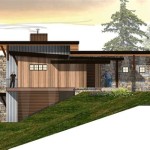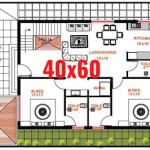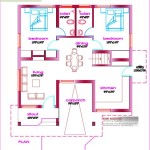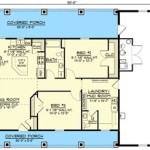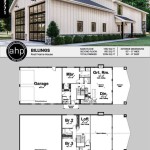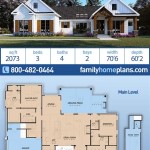House Plan Construction Cost: A Comprehensive Guide
Constructing a house represents a significant financial investment. Understanding the various factors influencing house plan construction costs is crucial for effective budgeting and project management. This article provides a detailed overview of these factors, offering insights to help navigate the complexities of building a new home.
The cost of constructing a house plan is not a fixed figure. It’s a dynamic calculation affected by multiple variables, including the size and complexity of the design, the materials selected, the location of the build site, and the labor costs in the region. A thorough understanding of these elements allows for a more accurate cost estimation and informed decision-making throughout the construction process.
Key Factors Influencing House Plan Construction Cost
Several key factors directly impact the overall construction cost of a house plan. These elements interact with one another, creating a unique cost profile for each individual project. Careful consideration of these factors is necessary to maintain a realistic budget and avoid unforeseen expenses.
Size and Complexity of the House Plan
The size of the house, measured in square footage, is a primary determinant of construction cost. Larger homes inherently require more materials, more labor, and more time to complete, leading to increased expenses. The complexity of the design also plays a significant role. Intricate designs with numerous angles, curves, and custom features will invariably cost more to build than a simple, rectangular structure.
Two-story homes, while potentially offering more living space on a smaller footprint, can sometimes be more expensive than single-story homes due to the added structural requirements for supporting the second floor. Similarly, homes with complex rooflines, such as those with dormers, gables, or multiple roof planes, will incur higher labor and material costs than homes with simpler roof designs.
The number of bathrooms and the size of the kitchen are also important considerations. These areas typically involve more plumbing, electrical work, and specialized finishes, contributing to a higher overall cost. Custom cabinetry, high-end appliances, and intricate tile work in these areas can further escalate expenses.
Materials Used in Construction
The selection of construction materials has a substantial impact on the final cost of the project. Material prices fluctuate based on market conditions, availability, and the chosen quality. Choosing between different types of framing lumber, siding materials, roofing options, and interior finishes can significantly alter the overall budget.
For instance, concrete block construction may be less expensive than traditional wood framing in some regions, while in others, the opposite may be true. Similarly, opting for vinyl siding instead of brick or stone veneer will result in considerable cost savings. Roofing materials range from relatively inexpensive asphalt shingles to more durable and aesthetically pleasing options like tile, slate, or metal, each with varying price points.
Interior finishes, including flooring, countertops, and paint, also contribute to the overall material cost. Hardwood flooring is generally more expensive than carpet or vinyl flooring. Granite countertops are more costly than laminate options. Selecting energy-efficient windows and doors can also increase the initial investment but may lead to long-term savings on energy bills. The choice of materials should be carefully balanced between budget considerations, desired aesthetic, and long-term performance requirements.
Location and Site Conditions
The geographic location of the building site profoundly influences construction costs. Labor rates, material prices, and permit fees vary significantly from region to region. Metropolitan areas and regions with high demand for housing often have higher labor costs and material prices compared to rural areas. Proximity to suppliers and transportation infrastructure can also affect material delivery costs.
Site conditions also play a crucial role. Properties with challenging terrain, such as steep slopes or unstable soil, may require additional site preparation work, including excavation, grading, and soil stabilization. These activities can add significantly to the overall cost. The presence of underground utilities, rock formations, or environmental hazards can also increase site preparation expenses.
Permitting fees and regulatory requirements also vary by location. Some municipalities have stricter building codes and require more extensive inspections, resulting in higher costs. Zoning regulations may also dictate specific design restrictions or require specific building materials, further affecting the budget. It is essential to research local building codes and permitting requirements early in the planning process to avoid unexpected expenses.
Additional Cost Considerations
Beyond the core factors of size, materials, and location, several other cost considerations can significantly impact the overall budget. These often-overlooked aspects can quickly escalate expenses if not properly planned for.
Labor Costs and Contractor Fees
Labor costs constitute a significant portion of the total construction expense. The cost of hiring skilled tradespeople, such as carpenters, plumbers, electricians, and masons, varies depending on their experience, expertise, and the prevailing wage rates in the area. The complexity of the project and the level of craftsmanship required will also influence labor costs.
Contractor fees typically encompass the general contractor's overhead expenses, profit margin, and project management services. These fees can range from 10% to 20% of the total construction cost, depending on the contractor's experience, reputation, and the scope of services provided. It is crucial to obtain multiple bids from reputable contractors and carefully review their proposals to understand the scope of work, payment schedule, and warranty provisions.
Subcontractor costs, which are included in the general contractor's overall price, also contribute to the overall labor expense. These costs include the fees paid to specialized tradespeople for specific tasks, such as plumbing, electrical work, HVAC installation, and roofing. Negotiating favorable terms with subcontractors can help control overall labor costs.
Permitting and Inspection Fees
Permitting and inspection fees are mandatory costs associated with obtaining the necessary approvals from local authorities to build a house. These fees cover the review of architectural plans, site inspections, and compliance with building codes and zoning regulations. The cost of permits can vary significantly depending on the location and the scope of the project.
Inspection fees cover the cost of inspections conducted by local building officials to ensure that the construction complies with applicable codes and standards. Inspections are typically required at various stages of the construction process, including foundation, framing, plumbing, electrical, and final completion. Failure to pass inspections can result in delays and additional costs for corrective work.
It is essential to factor in permit and inspection fees when preparing the construction budget. These fees can add a considerable amount to the overall cost, especially in areas with stringent building codes and extensive permitting requirements. Researching local permitting requirements early in the planning process can help avoid surprises and ensure compliance.
Unexpected Expenses and Contingency Funds
Construction projects are inherently prone to unforeseen circumstances and unexpected expenses. Weather delays, material price increases, hidden site conditions, and changes in design are just a few examples of potential challenges that can impact the budget. To mitigate the risk of cost overruns, it is crucial to establish a contingency fund to cover unexpected expenses.
A contingency fund is a dedicated portion of the budget set aside to address unforeseen costs. A commonly recommended practice is to allocate 5% to 10% of the total construction cost to the contingency fund. This fund should be used to cover unexpected expenses that arise during the construction process, such as changes in design, unforeseen site conditions, or material price increases.
Proper planning and communication with the contractor can help minimize the risk of unexpected expenses. However, it is essential to be prepared for the possibility of unforeseen circumstances and to have a contingency fund in place to address them. Regular monitoring of the budget and communication with the contractor can help identify potential cost overruns early on and take corrective action.
Strategies for Managing House Plan Construction Costs
Given the numerous factors influencing house plan construction costs, effective management strategies are essential for staying within budget and minimizing unexpected expenses. Implementing these strategies can help ensure a successful and cost-effective construction project.
Detailed Planning and Budgeting
Comprehensive planning and budgeting are fundamental to controlling construction costs. A detailed budget should encompass all aspects of the project, including materials, labor, permits, fees, and contingency funds. Obtaining accurate cost estimates from multiple contractors and suppliers is crucial for developing a realistic budget.
The budget should be regularly reviewed and updated throughout the construction process to reflect any changes in design, material prices, or site conditions. Tracking expenses and comparing them to the budget can help identify potential cost overruns early on and allow for corrective action.
Prioritizing essential features and making informed decisions about material selections can also help control costs. Opting for less expensive materials or simplifying the design in certain areas can free up funds for more important aspects of the project.
Value Engineering and Cost-Effective Design
Value engineering involves analyzing the design and construction process to identify opportunities to reduce costs without compromising quality or functionality. This can include simplifying the design, using alternative materials, or optimizing construction methods.
Cost-effective design principles can also help minimize construction costs. For example, designing a house with a simple rectangular footprint and a straightforward roofline can significantly reduce costs compared to a more complex design. Choosing standard-sized windows and doors can also lower costs compared to custom-made items.
Working closely with the architect and contractor during the design phase can help identify opportunities for value engineering and cost-effective design. Their expertise and experience can provide valuable insights into potential cost savings.
Effective Communication and Project Management
Clear and consistent communication among the homeowner, architect, and contractor is essential for successful project management. Regular meetings and open communication channels can help ensure that everyone is on the same page and that any potential issues are addressed promptly.
Effective project management involves overseeing all aspects of the construction process, from planning and budgeting to scheduling and quality control. A skilled project manager can help ensure that the project stays on schedule and within budget.
Careful monitoring of the construction progress and regular site inspections can help identify potential problems early on and prevent costly rework. Addressing issues promptly can minimize delays and ensure that the construction meets the required standards.

Duplex House Construction Cost In Bangalore 20 30 40 60 50 80 Or Of For Building
How Much Does It Cost To Construct 30 40 Ground Floor House Smiti Construction

30x30 House Plan And Construction Cost Housedesigns99

500 Square Feet House Plan Construction Cost Acha Homes

30x30 House Plan And Construction Cost Housedesigns99

30x40 House Plan And Construction Cost Housedesigns99
House Construction Cost Calculator Excel Sheet

New Home Construction Costs By The Numbers

30 40 Construction Cost In Bangalore House Of G 1 2 3 4 Floors Residential

40 60 Construction Cost In Bangalore House Of 2400 Sq Ft Residential G 1 2 3 4 Duplex

